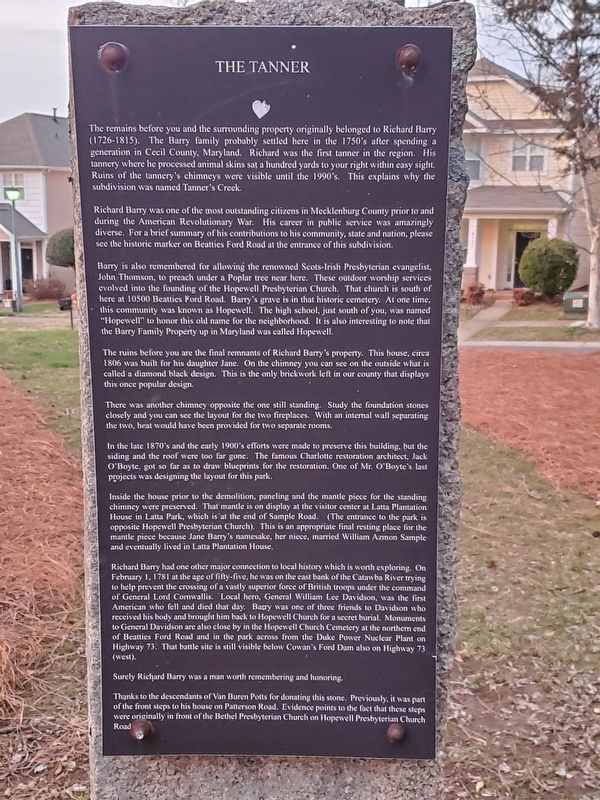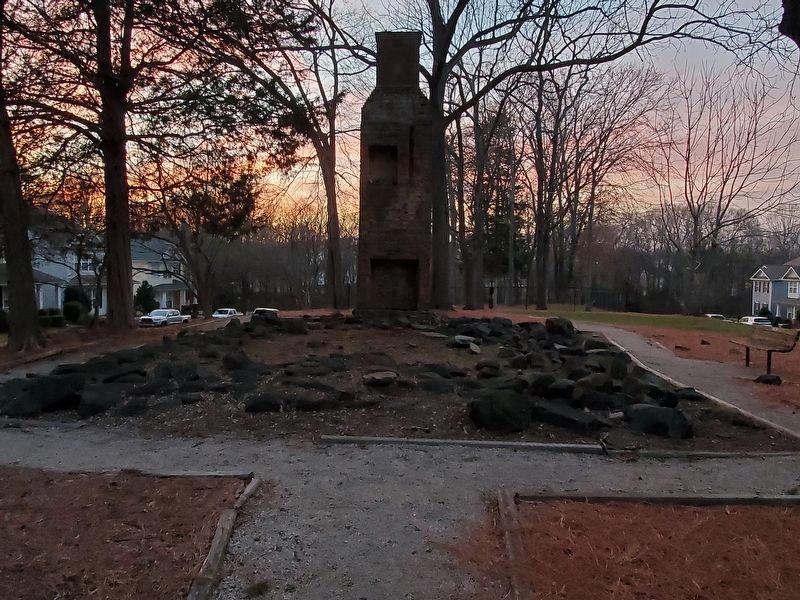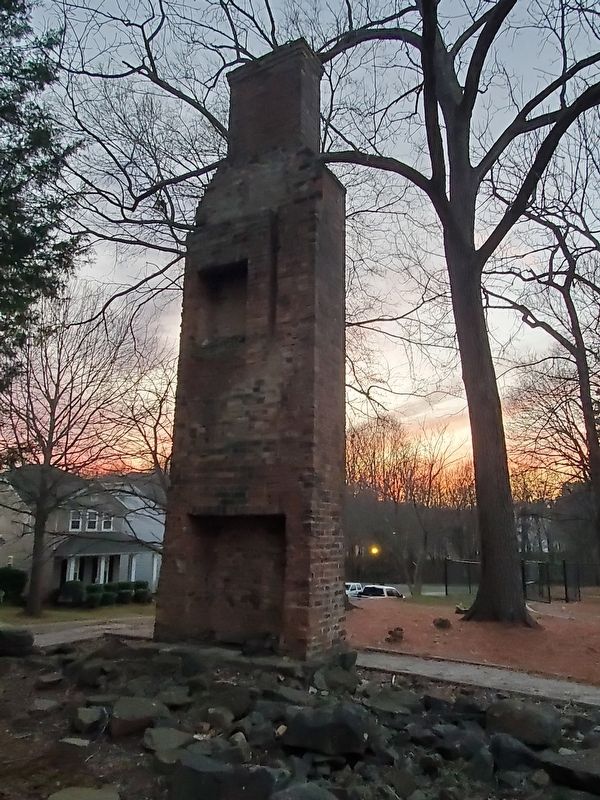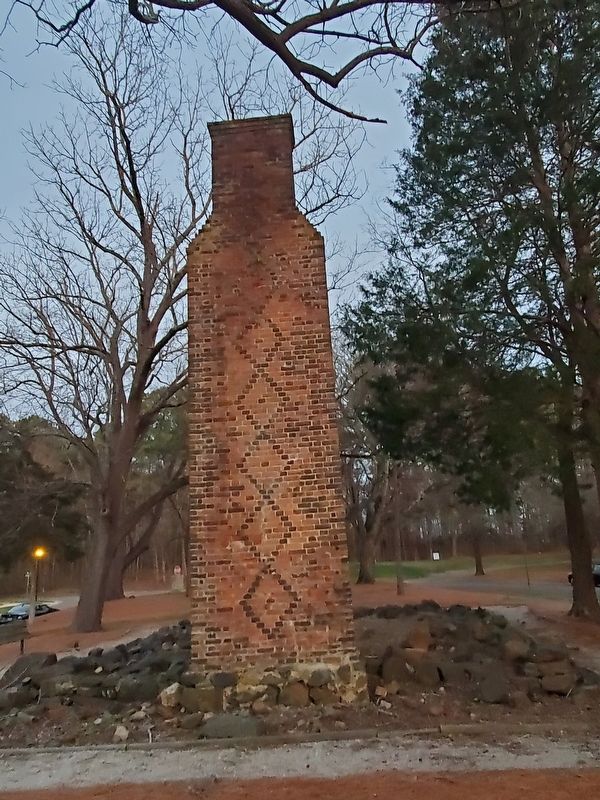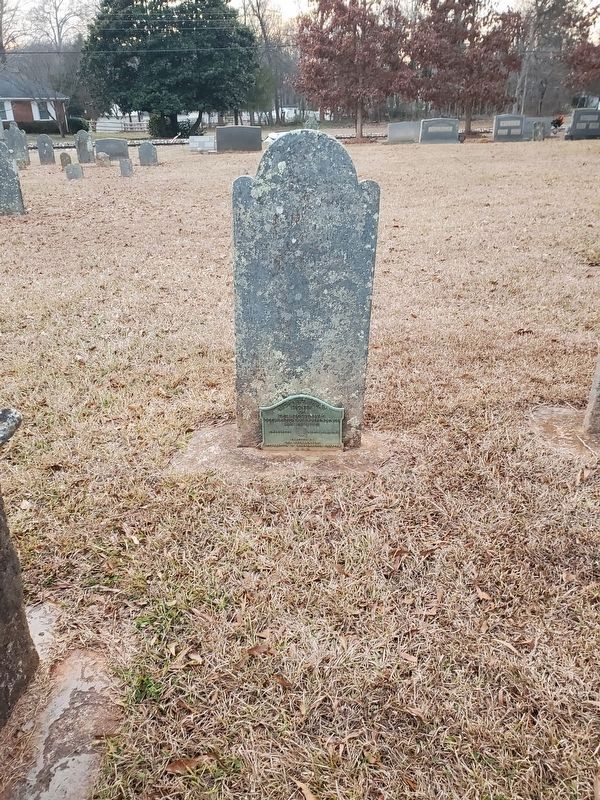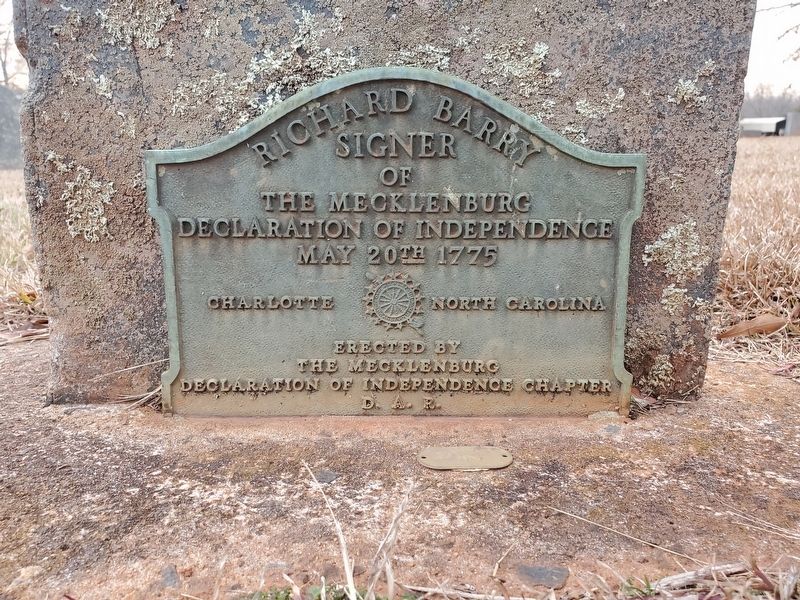Huntersville in Mecklenburg County, North Carolina — The American South (South Atlantic)
The Tanner
Richard Barry was one of the most outstanding citizens in Mecklenburg County prior to and during the American Revolutionary War. His career in public service was amazingly diverse. For a brief summary of his contributions to his community, state and nation, please see the historic marker on Beatties Ford Road at the entrance of this subdivision.
Barry is also remembered for allowing the renowned Scots-Irish Presbyterian evangelist, John Thomson, to preach under a Poplar tree near here. These outdoor worship services evolved into the founding of the Hopewell Presbyterian Church. That church is south of here at 10500 Beatties Ford Road. Barry's grave is in that historic cemetery. At one time, this community was known as Hopewell. The high school, just south of you, was named "Hopewell" to honor this old name for the neighborhood. It is also interesting to note that the Barry Family Property up in Maryland was called Hopewell.
The ruins before you are the final remnants of Richard Barry's property. This house, circa 1806 was built for his daughter Jane. On the chimney you can see on the outside what is called a diamond black design. This is the only brickwork left in our county that displays this once popular design.
There was another chimney opposite the one still standing. Study the foundation stones closely and you can see the layout for the two fireplaces. With an internal wall separating the two, heat would have been provided for two separate rooms.
In the late 1870's and the early 1900's efforts were made to preserve this building, but the siding and the roof were too far gone. The famous Charlotte restoration architect, Jack O'Boyte, got so far as to draw blueprints for the restoration. One of Mr. O'Boyte's last projects was designing the layout for this park.
Inside the house prior to the demolition, paneling and the mantle piece for the standing chimney were preserved. That mantle is on display at the visitor center at Latta Plantation House in Latta Park, which is at the end of Sample Road. (The entrance to the park is opposite Hopewell Presbyterian Church). This is an appropriate final resting place for the mantle piece because Jane Barry's namesake, her niece, married William Azmon Sample and eventually lived in Latta Plantation House.
Richard Barry had one other major connection to local history which is worth exploring. On February 1, 1781 at the age of fifty-five, he was on the east bank of the Catawba River trying to help prevent the crossing of a vastly superior force of British troops under the command of General Lord Cornwallis. Local hero, General William Lee Davidson, was the first American who fell and died that day. Barry was one of three friends to Davidson who received his body and brought him back to Hopewell Church for a secret burial. Monuments to General Davidson are also close by in the Hopewell Church Cemetery at the northern end of Beatties Ford Road and in the park across from the Duke Power Nuclear Plant on Highway 73. That battle site is still visible below Cowan's Ford Dam also on Highway 73 (west).
Surely Richard Barry was a man worth remembering and honoring.
Thanks to the descendants of Van Buren Potts for donating this stone. Previously, it was part of the front steps to his house on Patterson Road. Evidence points to the fact that these steps were originally in front of the Bethel Presbyterian Church on Hopewell Presbyterian Church Road
Topics. This historical marker is listed in these topic lists: Colonial Era • Industry & Commerce • Patriots & Patriotism • Settlements & Settlers • War, US Revolutionary. A significant historical date for this entry is February 1, 1781.
Location. 35° 22.931′ N, 80° 54.805′ W. Marker is in Huntersville, North Carolina, in Mecklenburg County. Marker is at the intersection of Tidal Court and Coastal Way, on the left when traveling west on Tidal Court. Marker and homesite ruins are within a small park in the Tanner's Creek subdivision bounded by Tidal Ct, Coastal Way and Summer Serenade Dr. Touch for map. Marker is at or near this postal address: 9749 Tidal Court, Huntersville NC 28078, United States of America. Touch for directions.
Other nearby markers. At least 8 other markers are within 2 miles of this marker, measured as the crow flies. The First Sermon of Hopewell Presbyterian Church (within shouting distance of this marker); Richard Barry (approx. ¼ mile away); William Lee Davidson (approx. 1.4 miles away); The Church Building (approx. 1.4 miles away); In Memory of the Revolutionary War Patriots of Hopewell Presbyterian Church (approx. 1.4 miles away); William Graham (approx. 1.4 miles away); The Servant Entrance (approx. 1.4 miles away); Hopewell Presbyterian Church (approx. 1.4 miles away). Touch for a list and map of all markers in Huntersville.
Related markers. Click here for a list of markers that are related to this marker.
Credits. This page was last revised on January 22, 2024. It was originally submitted on January 16, 2024, by Mark Parker of Hickory, North Carolina. This page has been viewed 55 times since then. Photos: 1, 2, 3, 4, 5, 6. submitted on January 16, 2024, by Mark Parker of Hickory, North Carolina. • Bernard Fisher was the editor who published this page.
